
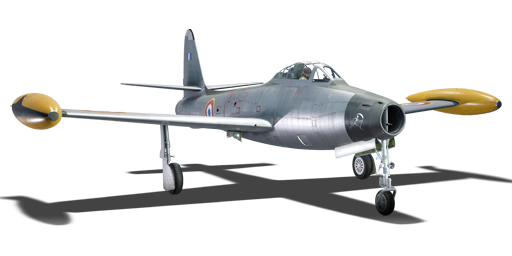


Republic Aircraft Company's jump into the jet fighter market was not as smooth as they would have liked. They experienced severe growing pains as they developed and produced the F-84 series aircraft, especially the B, C, D and E variants. Important upgrades and modifications included a more powerful turbine engine, strengthened wings, aerodynamically secure wing-tip fuel tanks and a strengthened structure. The result of these upgrades was the much improved F-84G fighter, which boasted new innovations such as improved avionics, radar, the capability of in-flight refuelling and ability to carry a Mark 7 nuclear bomb. Though the operationally longest lasting of the series with the United States (into the mid-1960s), several other nations continued to use it including Taiwan (Republic of China) and Italy, however, Greece continued flying their fighters until 1991. France operated a total of 140 F-84s of the E and G variants, purchased in the mid-1950s, as France at the time was facing conflicts in many of their overseas domains, while not having a modern close air support aircraft like the F-84.
It was introduced in Update 1.79 "Project X". Like many jet fighters, flying slowly makes for an easy target and this is no exception for the F-84G. Speed is necessary to ensure manoeuvrability both to engage a target and to shake a tail. Though not the fastest fighter at this rank, the F-84G can hold its own and when pressed, the six centrelined M3 Browning machine guns can punch enough holes in an enemy fighter to bring it down. Don't expect this fighter when laden down with two 1,000 lb bombs or two Tiny Tim and 24 HVAR rockets to excel in a dogfight as it won't with all that weight, however, after all that ordnance is released the F-84G can then mix it up, though it is preferable to maintain speed while performing Boom & Zoom manoeuvres.
flaps
flaps
flaps
brake
| Belt | Belt filling | Armor penetration (mm) at a distance: | |||||
|---|---|---|---|---|---|---|---|
| 10 m | 100 m | 500 m | 1000 m | 1500 m | 2000 m | ||
| API-T/AP/AP/I | 30 | 27 | 20 | 13 | 9 | 6 | |
| AP-I/AP-I/API-T/I/I | 28 | 26 | 18 | 11 | 7 | 4 | |
| API-T/I/AP/AP/AP-I/AP-I | 30 | 27 | 20 | 13 | 9 | 6 | |
| API-T | 28 | 26 | 18 | 11 | 7 | 4 | |
| AP-I/I/AP-I/I | 28 | 26 | 18 | 11 | 7 | 4 | |
| Name | Weight | Slot | ||||||||
|---|---|---|---|---|---|---|---|---|---|---|
| 2 × 2 × 2 × | 376.8 kg | 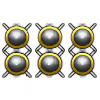 |  | |||||||
| 188.4 kg | 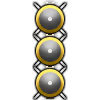 |  |  |  | ||||||
| 2 × 2 × | 251.2 kg | 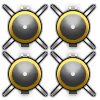 |  | |||||||
| 534.2 kg | 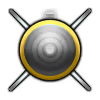 |  | ||||||||
| 49.9 kg |  |  | ||||||||
| 117.9 kg |  |  | ||||||||
| 242.6 kg |  |  | ||||||||
| 500.8 kg | 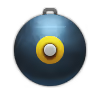 |  | ||||||||












Flight performance | |
|---|---|
Survivability |
|---|
Weaponry | ||
|---|---|---|